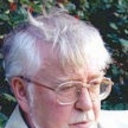An attempt to prevent senescence: a mitochondrial approach.
Sleutelwoorden
Abstract
Antioxidants specifically addressed to mitochondria have been studied to determine if they can decelerate senescence of organisms. For this purpose, a project has been established with participation of several research groups from Russia and some other countries. This paper summarizes the first results of the project. A new type of compounds (SkQs) comprising plastoquinone (an antioxidant moiety), a penetrating cation, and a decane or pentane linker has been synthesized. Using planar bilayer phospholipid membrane (BLM), we selected SkQ derivatives with the highest permeability, namely plastoquinonyl-decyl-triphenylphosphonium (SkQ1), plastoquinonyl-decyl-rhodamine 19 (SkQR1), and methylplastoquinonyldecyltriphenylphosphonium (SkQ3). Anti- and prooxidant properties of these substances and also of ubiquinonyl-decyl-triphenylphosphonium (MitoQ) were tested in aqueous solution, detergent micelles, liposomes, BLM, isolated mitochondria, and cell cultures. In mitochondria, micromolar cationic quinone derivatives were found to be prooxidants, but at lower (sub-micromolar) concentrations they displayed antioxidant activity that decreases in the series SkQ1=SkQR1>SkQ3>MitoQ. SkQ1 was reduced by mitochondrial respiratory chain, i.e. it is a rechargeable antioxidant. Nanomolar SkQ1 specifically prevented oxidation of mitochondrial cardiolipin. In cell cultures, SkQR1, a fluorescent SkQ derivative, stained only one type of organelles, namely mitochondria. Extremely low concentrations of SkQ1 or SkQR1 arrested H(2)O(2)-induced apoptosis in human fibroblasts and HeLa cells. Higher concentrations of SkQ are required to block necrosis initiated by reactive oxygen species (ROS). In the fungus Podospora anserina, the crustacean Ceriodaphnia affinis, Drosophila, and mice, SkQ1 prolonged lifespan, being especially effective at early and middle stages of aging. In mammals, the effect of SkQs on aging was accompanied by inhibition of development of such age-related diseases and traits as cataract, retinopathy, glaucoma, balding, canities, osteoporosis, involution of the thymus, hypothermia, torpor, peroxidation of lipids and proteins, etc. SkQ1 manifested a strong therapeutic action on some already pronounced retinopathies, in particular, congenital retinal dysplasia. With drops containing 250 nM SkQ1, vision was restored to 67 of 89 animals (dogs, cats, and horses) that became blind because of a retinopathy. Instillation of SkQ1-containing drops prevented the loss of sight in rabbits with experimental uveitis and restored vision to animals that had already become blind. A favorable effect of the same drops was also achieved in experimental glaucoma in rabbits. Moreover, the SkQ1 pretreatment of rats significantly decreased the H(2)O(2) or ischemia-induced arrhythmia of the isolated heart. SkQs strongly reduced the damaged area in myocardial infarction or stroke and prevented the death of animals from kidney ischemia. In p53(-/-) mice, 5 nmol/kgxday SkQ1 decreased the ROS level in the spleen and inhibited appearance of lymphomas to the same degree as million-fold higher concentration of conventional antioxidant NAC. Thus, SkQs look promising as potential tools for treatment of senescence and age-related diseases.


